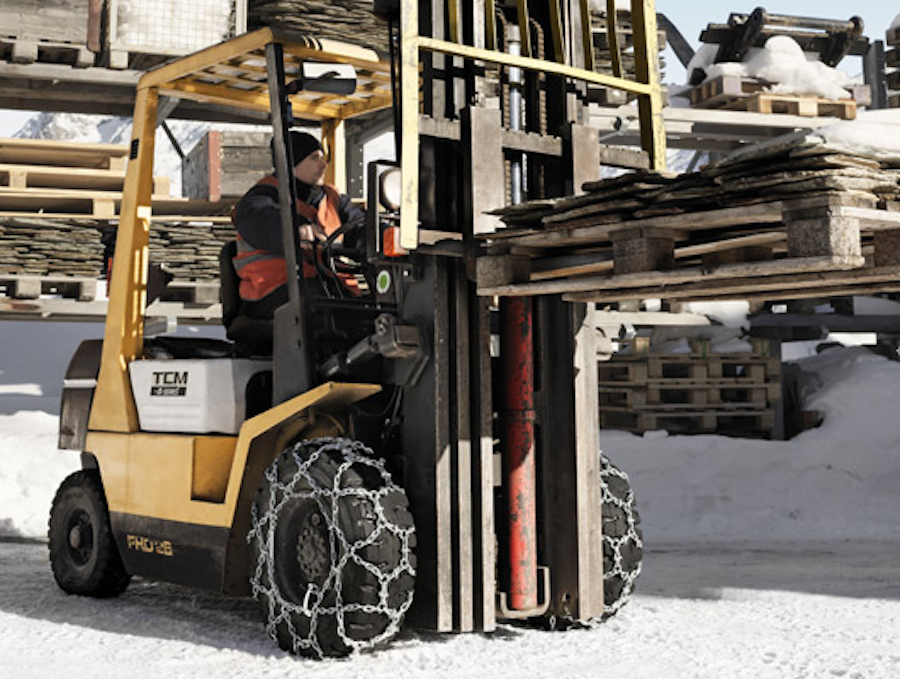News
How to Prepare Forklift Trucks for the Winter

The last few days in the UK have been crazy! Unexpectedly high levels of snowfall stopped many businesses in the South of England from operating for a whole weekend. It started around midday on Friday and after a couple of hours, it was barely possible to continue working outside. Dropping temperatures, snow, ice and wind made work difficult and caused many operations to fail. Safety, health and motivation of the employees were put at risk when the roads and yards became wet and slippery with limited visibility.
In such a conditions, it’s crucial to prepare machines and employees adequately to fully maintain business operations, at least until weather conditions improve.
Read below how to prepare forklift trucks for the winter making sure your vehicle is armed against the snow.
1. Forklift tyre condition and air pressure
Daily care of the tyres should be part of the process of forklift management all year round. You should pay attention to the overall condition and air pressure all the time. During the winter season, this is all the more important as the dropping temperature may cause damage to the rubber, a drop in tyre pressure or air evaporation.
2. Snow chains
With forklift trucks, it’s not possible to change to winter tyres like we would with the cars. Instead you can use special snow chains mounted on the tyres. Thanks to snow chains, the forklift truck maintains a better grip on surfaces covered with snow and/or ice.
Snow chains are easy to use and don’t take much space when stored. They can last for years when managed and maintained properly.
3. Lights
Every vehicle should have all lights checked before the work starts, especially if the forklift truck will be used outside when it’s snowing. Any bulbs not working or showing signs of wear (for example, if the light is flashing or is less intense than a new bulb) should be replaced before working in low visibility conditions.
4. Use Anti-freeze for windscreen and cooling system
The use of anti-freeze ensures that the windscreen stays clear and doesn’t obstruct the driver’s view. For owners and operators of diesel forklifts it is very important to remember that the correct amount of anti-freeze should be used in the coolant system. This will prevent the engine coolant from freezing solid and blocking the forklift’s coolant system, which leads to a number of problems with the unit overheating.
5. Batteries and electronic components
In cold weather, the battery drains quicker. It can be a good idea to change the forklift battery before the winter, as some of the older ones may be difficult to charge or take longer than usual.
You should also make sure all covers are closed to keep electronic components dry.
6. Safety in cold weather conditions
Allow the forklift to warm up before operating and always store it in a safe, dry place. Make sure that there is first aid kit attached to the vehicle and that the driver wears warm, reflective clothing.
Keep roads and yards clear and if you feel they may be slippery, spread sand and salt to prevent surfaces from freezing, add some traction and also make them less reflective.
Keep an eye on the wind when working outside at height. When loading and unloading materials, make sure everything is secured properly and the wind will not shift materials or cause the loss of balance of the load while you have it lifted.
We hope these six tips will keep you safe!

Subscribe
Keep up to date with PHL and all things forklift machinery.